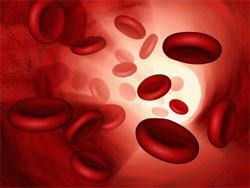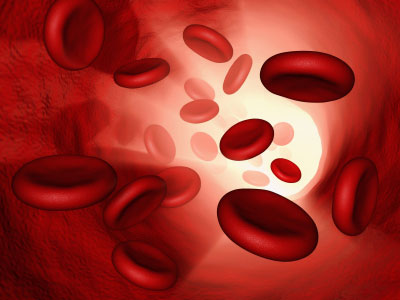Particles in a Pipe Communicate
Particles moving down a narrow, liquid-filled channel feel one another’s presence even if they are far apart, according to the 18 June Physical Review Letters. Researchers often assume such particles are independent. But a team extended previous work on the surprising behavior of a single particle in a channel filled with a non-ideal fluid–which could be water–and found otherwise. Their calculations and simulations show that distant particles can affect each other’s motion and that pushing one particle forward sets up a backward flow of liquid, thanks to the unusual flow of sound waves in a channel. The results imply that researchers should take care in interpreting how particles move through narrow openings, such as blood cells in vessels or DNA snaking its way through biological channels.
When you push your hand through water in a bathtub, the motion can pull along rubber duckies and other objects floating in the water. The momentum of your hand is transferred to the surrounding water molecules. The situation changes when the liquid and particles are confined in a narrow channel (without air), such as blood cells traveling down a blood vessel. The type of fluid motion that normally transfers momentum–so-called shear modes–becomes absorbed by the channel walls, so floating particles don’t affect each other if separated by more than the diameter of the channel. Or at least that is what most theorists have assumed.
A common assumption in fluid physics is that a liquid is incompressible, meaning its volume can’t be decreased by squeezing, in contrast to a gas. This idealization is often justified, but in the late 1990s theorists realized that the combination of a compressible fluid with rigid walls can lead to a new behavior for sound waves. Changes in density move through the fluid diffusively, rather than as oscillating disturbances that travel with a specific wave speed. Imagine tossing the proverbial stone in a lake of honey–the disturbance will travel some distance through the fluid, but not as waves. If a single particle sitting in a narrow, fluid-filled channel experiences a sudden push to the right, it will generate a density disturbance that diffuses rightward (and also a decrease in density that moves to the left). But eventually the extra build-up of density on the right will “push back” and send the particle to the left, explains Haim Diamant of Tel Aviv University in Israel.
Diamant and Derek Frydel, now at the University of Mainz, have now extended the analysis to two or more particles. As in the previous work, they constructed a simulation that represents a liquid as a series of points on a lattice. The simulation follows the movement of mass and momentum throughout the channel. They also performed analytical calculations based on some approximations and compared the results of the two methods.
Frydel and Diamant found that if two particles are in the channel and one is given a sudden push to the right, the other particle acts like a rubber ducky in the bathtub and moves rightward, at first. But the fluid soon begins to slosh back, causing the second particle to move to the left. Unlike the incompressible case, the distance between the particles can be much farther than the diameter of the channel. “If you wait for a short while, the whole liquid should know about the fact that the particle was pushed,” Diamant says. For water in a centimeter-long, micron-wide channel, it takes less than a millisecond, he says.
Fluctuations of liquid flow in a channel are of increasing importance as researchers work to manipulate large numbers of small droplets for research applications, says Tom Witten of the University of Chicago. The backward flow effect identified in the new paper may play a role in the frequency with which long trains of particles experience rare bunching events, he says.
–JR Minkel
JR Minkel is a freelance science writer in New York City.





